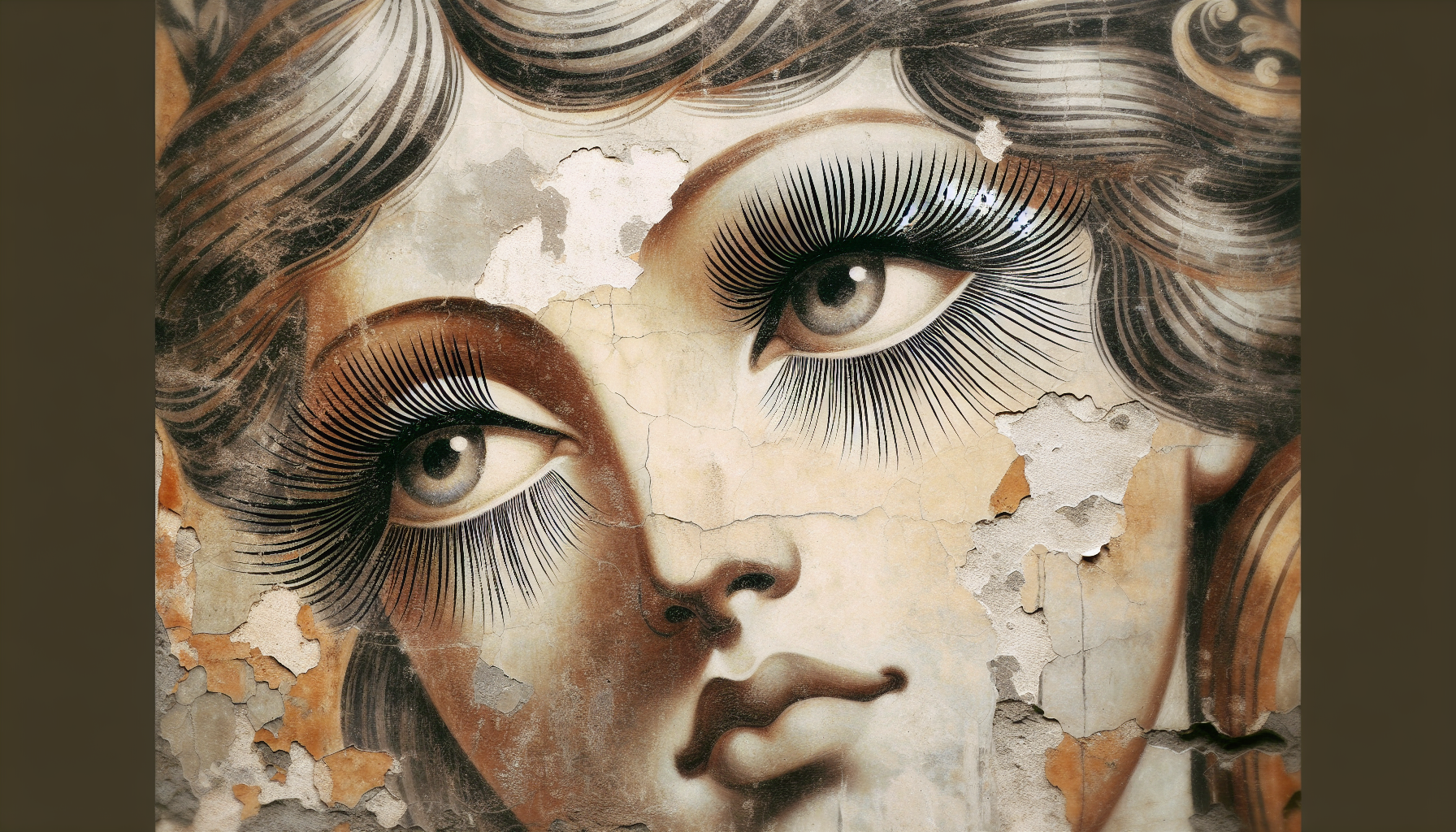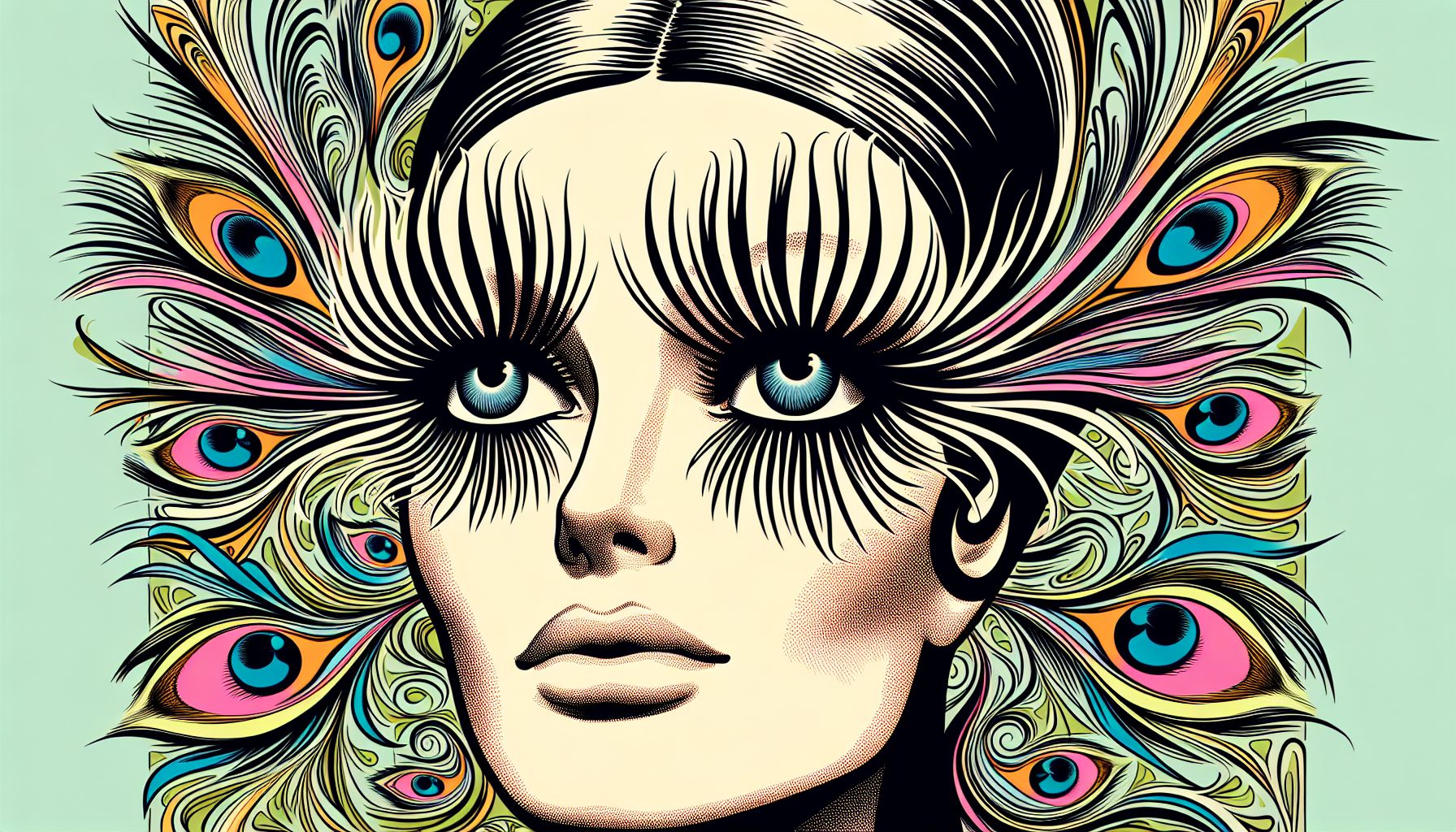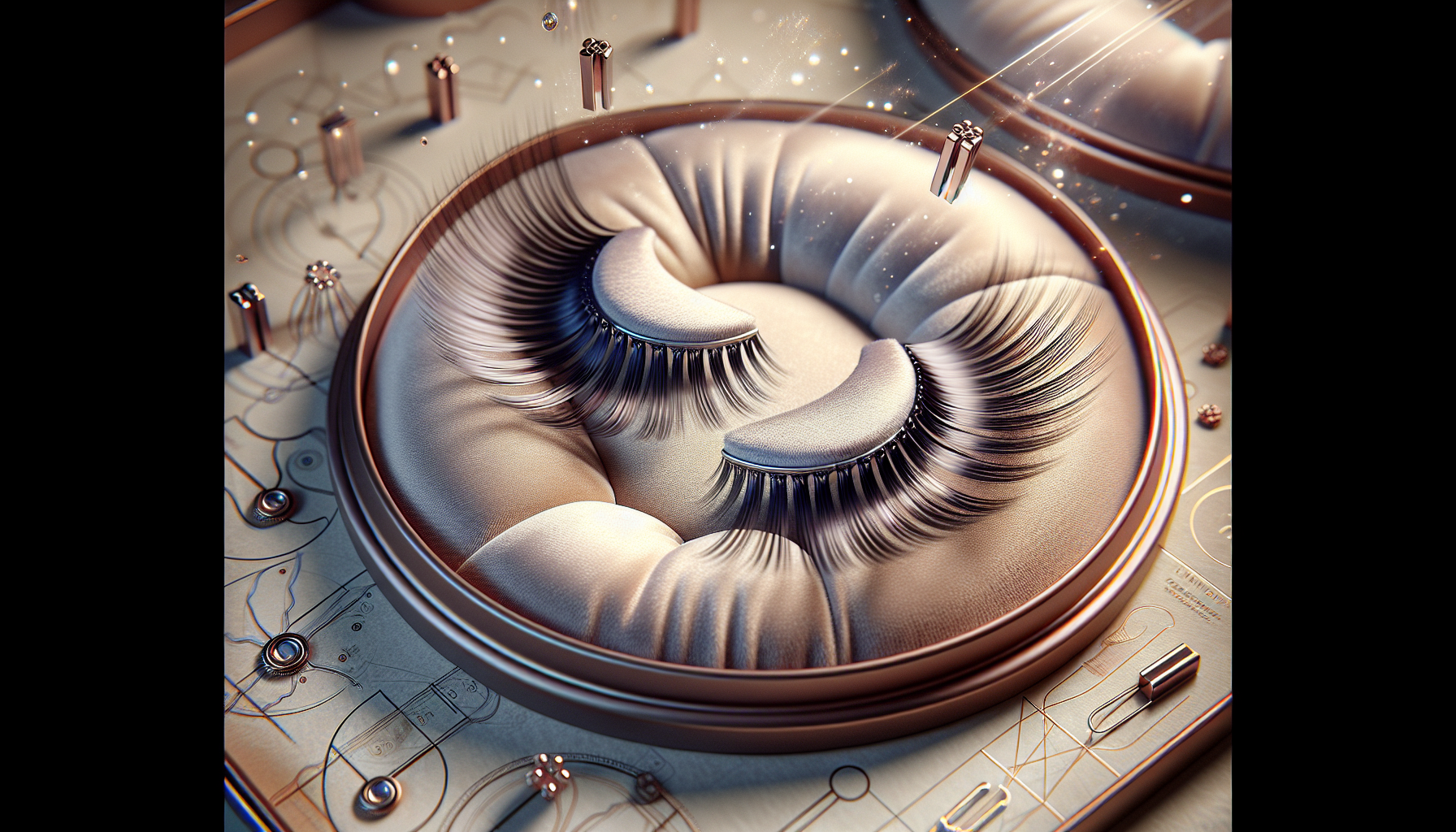Why were fake lashes invented? – The beauty story
Why do fake lashes exist? They emerged in the early 20th century to intensify the drama and vibrancy of the eyes for stage and film. This article takes you on a journey through the history of fake lashes and shows how a functional necessity evolved into a globally celebrated beauty attribute.
Did you know?
The first artificial eyelashes were made from human hair and fish skin and were an innovation by hair care master Karl Ludwig Nessler!
The Most Important Points at a Glance
-
Fake lashes originated in the early 20th century and experienced a boom with Hollywood glamour in the 1920s, with Anna Taylor registering the first patent in 1911.
-
The development progressed from natural materials to lightweight, synthetic options and various technical innovations like magnetic lash bands and customized extensions.
-
While fake lashes can boost self-confidence through a more expressive look, they also come with health risks and environmental and ethical challenges that are critically reflected in modern use.
The Origins of Fake Lashes

Before fake lashes were invented, voluminous lashes were already considered a coveted beauty feature and a sign of beauty and expressiveness in ancient civilizations like Egypt, Rome, Greece, and Japan. But how did the first artificial eyelashes come about?
The history of eyelash extensions begins in the early 20th century. This marks the beginning of a long and successful development in the beauty industry, as researchers invented the first fake lashes to meet the beauty ideals of the time.
From Protection to Beauty: The Initial Function of Eyelashes
Originally, eyelashes served a protective function for the eye area, shielding it from dirt and foreign objects. Over time, however, they have evolved into a central beauty feature that highlights the eye-catching and can somewhat define a person's appearance.
In ancient Egypt, eyelashes and eyelids were even adorned to emphasize beauty and enhance the eyes' expression.
Early Experiments with Eyelash Extensions

Karl Ludwig Nessler, a pioneer in hair care, was the first to attempt creating artificial eyelashes. His first eyelash extensions, made from human hair attached to fish skin, were offered in his London salon and were anything but ordinary at the time, such as diamond lashes.
This innovation was revolutionary and laid the foundation for the development of modern fake lashes.
Anna Taylor and the First Patent
The invention of fake lashes took a decisive turn when Anna Taylor received the first US patent for artificial eyelashes in 1911. Her contribution to the history of eyelash extensions was groundbreaking and allowed fake lashes to become a widely recognized beauty product.
The Evolution of Fake Lashes in the 20th Century
With the rise of Hollywood in the 1920s, fake lashes experienced an unprecedented boom. Movie stars like Seena Owen helped make artificial eyelashes a symbol of glamour and elegance. This development continued, leading to a variety of innovations and styles over the decades.
Hollywood Glamour and the Spread of Fake Lashes

Hollywood's influence on the spread of fake lashes cannot be overstated. The film industry and its screen goddesses made wearing artificial eyelashes socially acceptable and gave them a glamorous flair that resonates to this day.
From Natural Hair to Synthetic Innovations
The development of synthetic materials like PBT revolutionized the availability and application of fake lashes. They became lighter, more diverse, and easier to handle, making them a popular accessory for women worldwide.
| Natural Materials | Synthetic Materials |
|---|---|
| Originally made from human hair and animal hair | Made from lightweight and hypoallergenic synthetic fibers like PBT |
| Require special care and are more expensive | Easier to handle and more affordable |
| Natural appearance | Versatile in shape and style |
The Twiggy Era and Voluminous Lashes

Twiggy, the famous model of the 1960s, changed the beauty world with her distinctive look, which included voluminous lashes. Her way of wearing fake lashes shaped an entire generation and became a symbol for the make-up culture and fashion of that time.
Modern Applications and Techniques
Today, fake lashes are indispensable and have evolved far beyond traditional methods. New techniques like lash lifting and lash perming offer alternatives that meet the needs and desires of wearers.
Magnetic Lash Bands and Self-Adhesive Solutions

The innovation of magnetic lash bands represents a revolution, as it allows the application of fake lashes without the use of glue. This technique is not only easier but also gentler on the eyes.
Individual Eyelash Extensions and Volume Technique
Individual eyelash extensions allow you to emphasize your natural lashes without creating an exaggerated or artificial look. The volume technique, which provides a dense lash line, offers a natural yet impressive result.
Sustainability and Ethics in Production
In a time when sustainability and ethics are becoming increasingly important, attention is also being paid to the production of fake lashes. The use of animal products and the environmental impact of synthetic materials are being critically examined.
Development of Fake Lashes
- 1911: Anna Taylor receives the first patent for artificial eyelashes.
- 1920s: Hollywood icons wear fake lashes, which become a symbol of glamour.
- 1960s: Twiggy popularizes voluminous lashes and changes beauty standards.
- Today: Modern innovations like magnetic lash bands and individual extensions offer a variety of options.
Psychological and Social Aspects of Fake Lashes
In addition to their aesthetic function, fake lashes also impact self-confidence and self-perception. They are an expression of personal style and reflect the visual culture of our time.
Wearing fake lashes can boost self-confidence and contribute to positive self-perception. For many, it is an act of empowerment and a way to feel beautiful and self-assured.
The Role of Fake Lashes in Modern Beauty Culture
In today's beauty culture, fake lashes are an important element that contributes to the definition of the beauty ideal. They have evolved from a niche product to a widely used accessory available in various styles that enable different looks.
Through social media and influencers, fake lashes are made accessible to a broader audience. Tutorials, reviews, and before-and-after pictures lower the inhibition to try fake lashes and contribute to their popularization.
Critical Perspectives and Challenges
Although fake lashes are a popular beauty product, there are also critical voices pointing out health risks, environmental impact, and ethical questions. The de-influencer movement calls for more transparency and honesty in the beauty industry.
Health Concerns and Risks
Improper use of fake lashes can lead to infections and allergic reactions. Therefore, it is important to apply and remove them correctly to avoid damaging your own lashes.
Environmental Impact and Sustainability Issues
The production of fake lashes from synthetic materials contributes to environmental pollution. It is therefore advisable to choose reusable products and opt for environmentally friendly alternatives.
Furthermore, the use of animal hair for fake lashes raises ethical questions. The beauty industry is responding to this with the development of hypoallergenic adhesives and vegan and cruelty-free options.
Instructions and Tips for Eyelash Extensions
To get the most out of fake lashes, it's important to choose the right products for your eye shape and to focus on proper application and care. This way, fake lashes can be worn safely and effectively without damaging natural lashes.
Selection Based on Eye Shape and Desired Look
The choice of the right fake lashes can significantly influence the appearance of the eyes. Different shapes and lengths can achieve different effects and should therefore be chosen consciously.
Proper Application and Care
Proper application and care of fake lashes help them last longer and look natural. Special care products and gentle handling are essential.
When handling fake lashes, there are some pitfalls to avoid. One of the most common mistakes is immediately attaching the lashes after applying the glue without waiting for it to become tacky enough.
Improper removal, which can damage natural lashes, should also be avoided.
Why Eyelash Serums Are Better Than Fake Lashes
Eyelash serums promote the natural growth of your lashes and avoid the irritation caused by glue from fake lashes. They offer long-term results and are easy to use for a natural, full lash look.
Eyelash serums have gained increasing popularity in recent years, and for good reasons. Unlike fake lashes, they offer a range of benefits that are not to be overlooked. Apart from their cost-effective price, eyelash serums are also known to promote the natural growth of your lashes. This means you not only experience temporary improvements, as is the case with fake lashes, but achieve long-term results.
Another key advantage of eyelash serums is that they avoid the risk of irritation or damage caused by adhesives. The glue used when applying fake lashes can often lead to skin irritations and even damage your natural lashes. With eyelash serums, you completely bypass this risk, as they are gently applied to your lashes and contain no aggressive adhesives.
In addition to their effectiveness and safety, eyelash serums are also extremely easy to use. Applied once a day, they require minimal time and are ideal for you if you lead a busy lifestyle.
Furthermore, they offer long-term results that lead to a natural and fuller lash appearance. Whether you are looking for more volume, length, or density, a high-quality eyelash serum can help you achieve your lash goals while improving the health of your lashes.
Summary
Fake lashes have undergone an impressive evolution, from the first experiments in the early 20th century to the diverse modern application techniques. They are not only a beauty product but also an expression of style and self-confidence. Despite the critical aspects and challenges associated with them, they remain a popular means of accentuating the eyes. Eyelash serums provide a great alternative to support natural lashes and achieve a natural result.
Quiz
1. When did the first fake lashes become popular?
- In the 18th century
- At the beginning of the 20th century
- In the 1960s
2. What was the main reason for inventing fake lashes?
- To improve vision
- To intensify the drama and vibrancy of the eyes for stage and film
- As protection from sunlight
3. Which material was not used for the production of the first fake lashes?
- Human hair
- Fish skin
- Synthetic fibers
Frequently Asked Questions
Why were fake lashes invented?
Fake lashes were introduced in the early 20th century to enhance the drama and vibrancy of the eyes for stage and film. This invention allowed a functional necessity to evolve into a globally celebrated beauty attribute.
What are the origins of fake lashes?
The history of fake lashes dates back to antiquity, where voluminous lashes were already a coveted beauty feature. However, their development into their modern form began in the early 20th century with the first experiments in creating artificial eyelashes.
What health risks are associated with fake lashes?
Improper application and care of fake lashes can lead to infections and allergic reactions. Therefore, it is important to ensure correct application and removal to avoid damaging your own lashes.
How do eyelash serums differ from fake lashes?
Eyelash serums offer a gentle alternative to fake lashes by promoting the natural growth of lashes and providing long-term results for natural styling. In contrast, fake lashes pose the risk of irritation and damage from adhesives.
